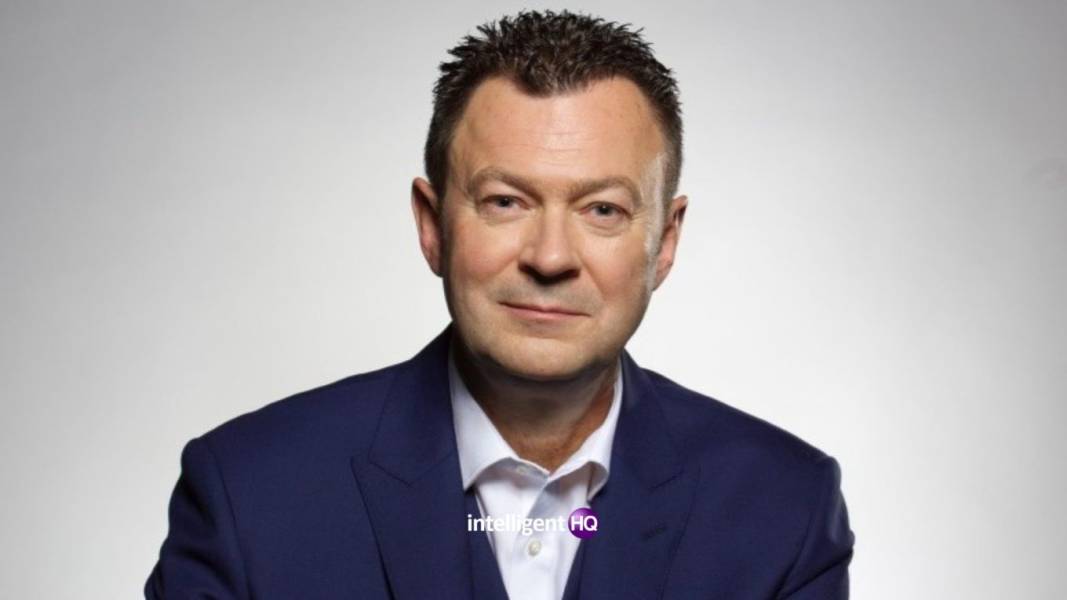Dinis interviews Phil Barden, an author, speaker, and consultant in the field of marketing, innovation and customer experience for more than two decades in the latest episode of his YouTube Podcast series. Phil explained the basics of neuropsychology and decision science from his extensive research and experience in the field of marketing and sales. The podcast is powered by platforms including openbusinesscouncil, citiesabc, and fashionabc.
Every business product and service needs an effective marketing campaign to increase its visibility and reach its target customer base. However, launching and managing successful campaigns can be difficult and fraught with challenges. Phil Barden, an expert sales professional has over 25 years of experience, including senior roles at Unilever, Diageo, and Deutsche Telekom (T-Mobile). He combines hands-on, pragmatic, client-side brand management experience with leading-edge cognitive & social psychology, neuroscience, and behavioural economics to provide analytical and predictive power, leveraging science to increase sales.
Talking about what lies within the layer of behavioural science at the bedrock of marketing, Phil told Dinis:
“You make the whole ethos of marketing which is about creating something that people value and they would like to buy for that value. They would give their money in return for that value. That whole mentality makes the business much more focussed and ultimately much more successful.”
He emphasised the idea of human behaviour as the fundamental element of marketing. “You want to market some brand, that means they exhibit some behaviour”, he said. Phil highlighted how the internet and other digital tools are easing the channels of marketing businesses. He also added that human behaviour patterns are universal. So, while consumer motivations and patterns have evolved over the years, the overall etiquette is the same.
More interviews
Decoded: The Science of Why We Buy – A Research and analytical study of the human brain and consumer choices

Phil is the author of ‘Decoded: The Science of Why We Buy’, where he shares the latest research on the motivations behind consumers’ choices and what happens in the human brain as buyers make their decisions. The book was published by Wiley.
Dinis asked Phil to summarise the insights and lessons in the book. Phil outlined an overview by defining the three basic trajectories of the book: Framing and comprehending the human brain, the basic principle of reward and pain, and the goal-oriented nature of human motivation behind consumption.
Mapping a consumer’s brain helps to get an insight into the inner workings of a consumer’s mind and the motivations behind their purchasing decisions. Marketers can use this method to gain a better understanding of the emotional and cognitive triggers that influence a consumer’s decision-making process. This also prompts custom-tailoring the marketing campaigns according to this data, which is more effective.
“We need to pay attention to the details. Understanding the perceptual process is crucial in marketing. Framing is also an interesting concept. Once we get into the brain of a person, the next process is intuitional understanding and how the brain decodes the incoming stimulus to give it meaning. After that, it’s almost like the brain is comprehending and searching through its associated memories over many years. And only then do we get motivation”, he said.
Explaining the reward and pain principle of marketing, he told Dinis that the consumer’s brain perceives a brand by activating the reward and pain circuits. The net value of this equation, he said, drives a consumer to make decisions.
He also highlighted the functional and neuropsychological goals that help consumers in their decision-making process. “Consumers are goal-oriented. Goals can be a mixture of functional things or neuropsychological requirements. This explains why we buy the brands that we do.”
The essence of behavioural science in the field of marketing
Behavioural Science, or the study of human behaviour, could be an effective and vital tool to create better marketing campaigns, products, and services. Phil explained to Dinis the nuances of studying the goals of consumers while designing a marketing campaign. He mentioned six granular goals that are universal to consumers: autonomy, discipline, security, enjoyment, excitement, and adventure. These, he said, can be measured quantitatively using implicit testing.
Referring to his book, he also presented the various facets of emotional marketing. Emotional marketing is an advertising technique that appeals to a consumer’s emotions in order to influence their buying decisions. Emotional marketing aims to create an emotional attachment with the consumer and make them feel more connected to the brand. This is achieved by appealing to their emotions through various tactics such as storytelling, positive reinforcement, and humour.
Phil also explained the risks and dangers of this strategy of marketing. Emotional marketing could appear manipulative to consumers, causing them to lose trust in the product. Taking illustrations of failed campaigns of various big brands including Cadbury and Dove, he also highlighted how statistics and metrics could mislead into an expensive and failed campaign.
“What is dangerous about emotional marketing is that there are millions of ways to make the audience emotional. But, what’s right for the brand should be the final objective of any marketing campaign. Focus on the goal that you want to convey and activate. The emotional response that you get, if you do that correctly will be positive, people will feel good, happy, or joyed, but don’t use that as an input. Use, instead, as the desired outcome”, he said.
About citiesabc.com
https://www.citiesabc.com/
https://twitter.com/citiesabc__
About openbusinesscouncil.org
https://www.openbusinesscouncil.org/
4IR: AI Blockchain Fintech IoT Reinventing a Nation by Dinis Guarda and Rais Hussin (4irbook.com)
Dinis Guarda citiesabc openbusinesscouncil Series is also available as podcast on:
Apple Podcasts: https://podcasts.apple.com/us/podcast/dinis-guarda-citiesabc-openbusinesscouncil-series/id1510330391
On Spotify: https://open.spotify.com/show/1vA8KaDaRpJ0mAfpNbfTSF?si=H_WngL4RSOyu1W7VAmM41w&dl_branch=1
Google Podcasts: https://podcasts.google.com/feed/aHR0cHM6Ly9mZWVkcy5idXp6c3Byb3V0LmNvbS8xMDMyMzg4LnJzcw==
Amazon Music: https://music.amazon.com/podcasts/953a5156-823c-4e86-baeb-4fda1128e44c/DINIS-GUARDA-CITIESABC-OPENBUSINESSCOUNCIL-SERIES

Hernaldo Turrillo is a writer and author specialised in innovation, AI, DLT, SMEs, trading, investing and new trends in technology and business. He has been working for ztudium group since 2017. He is the editor of openbusinesscouncil.org, tradersdna.com, hedgethink.com, and writes regularly for intelligenthq.com, socialmediacouncil.eu. Hernaldo was born in Spain and finally settled in London, United Kingdom, after a few years of personal growth. Hernaldo finished his Journalism bachelor degree in the University of Seville, Spain, and began working as reporter in the newspaper, Europa Sur, writing about Politics and Society. He also worked as community manager and marketing advisor in Los Barrios, Spain. Innovation, technology, politics and economy are his main interests, with special focus on new trends and ethical projects. He enjoys finding himself getting lost in words, explaining what he understands from the world and helping others. Besides a journalist, he is also a thinker and proactive in digital transformation strategies. Knowledge and ideas have no limits.






























